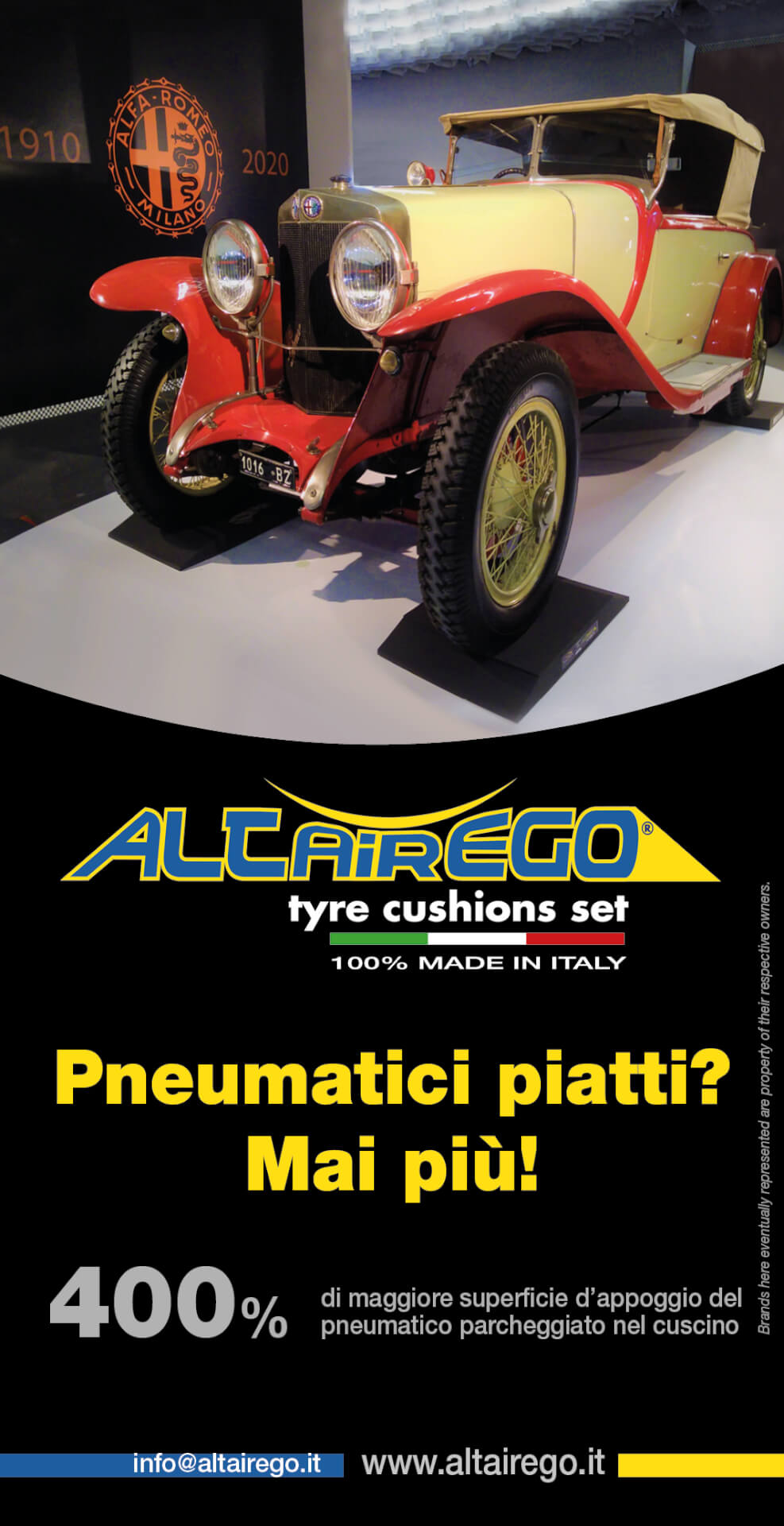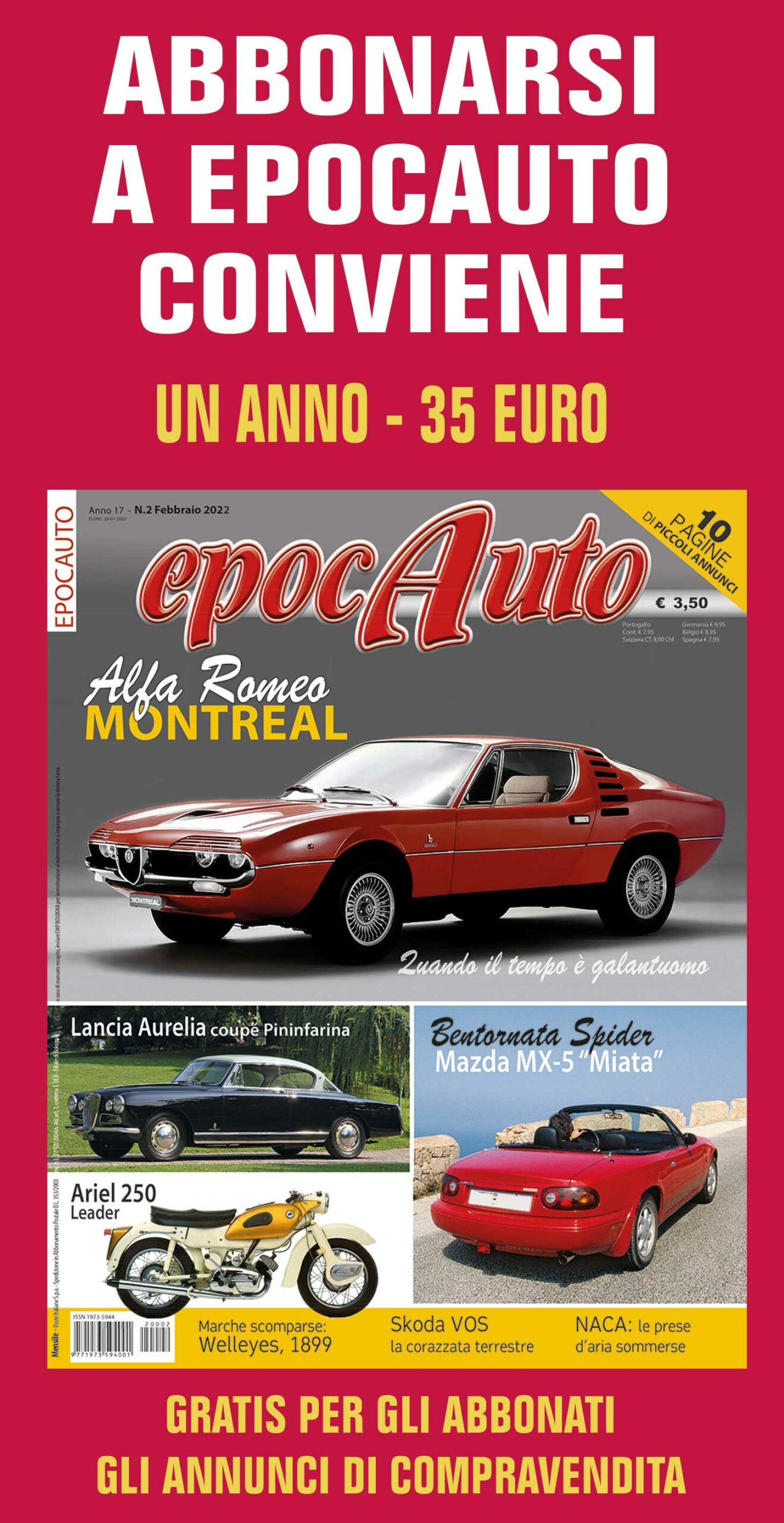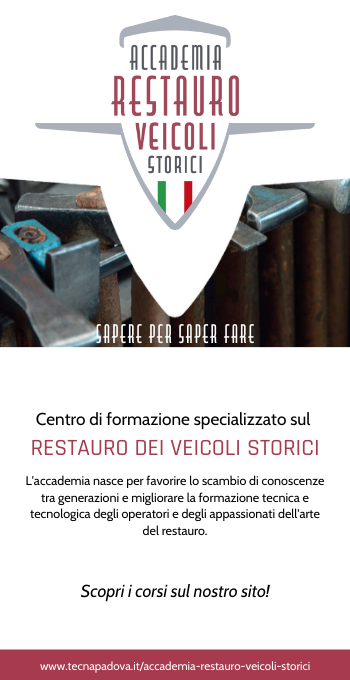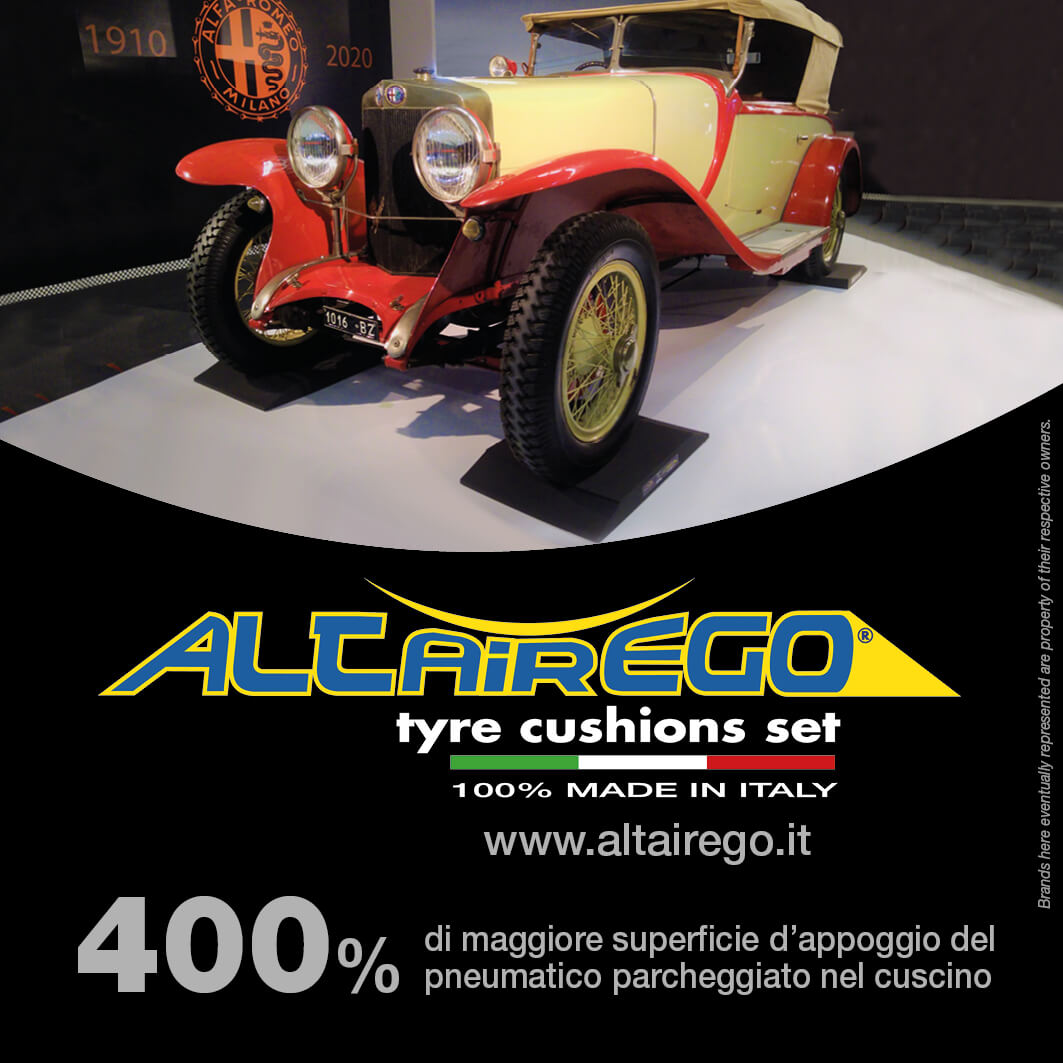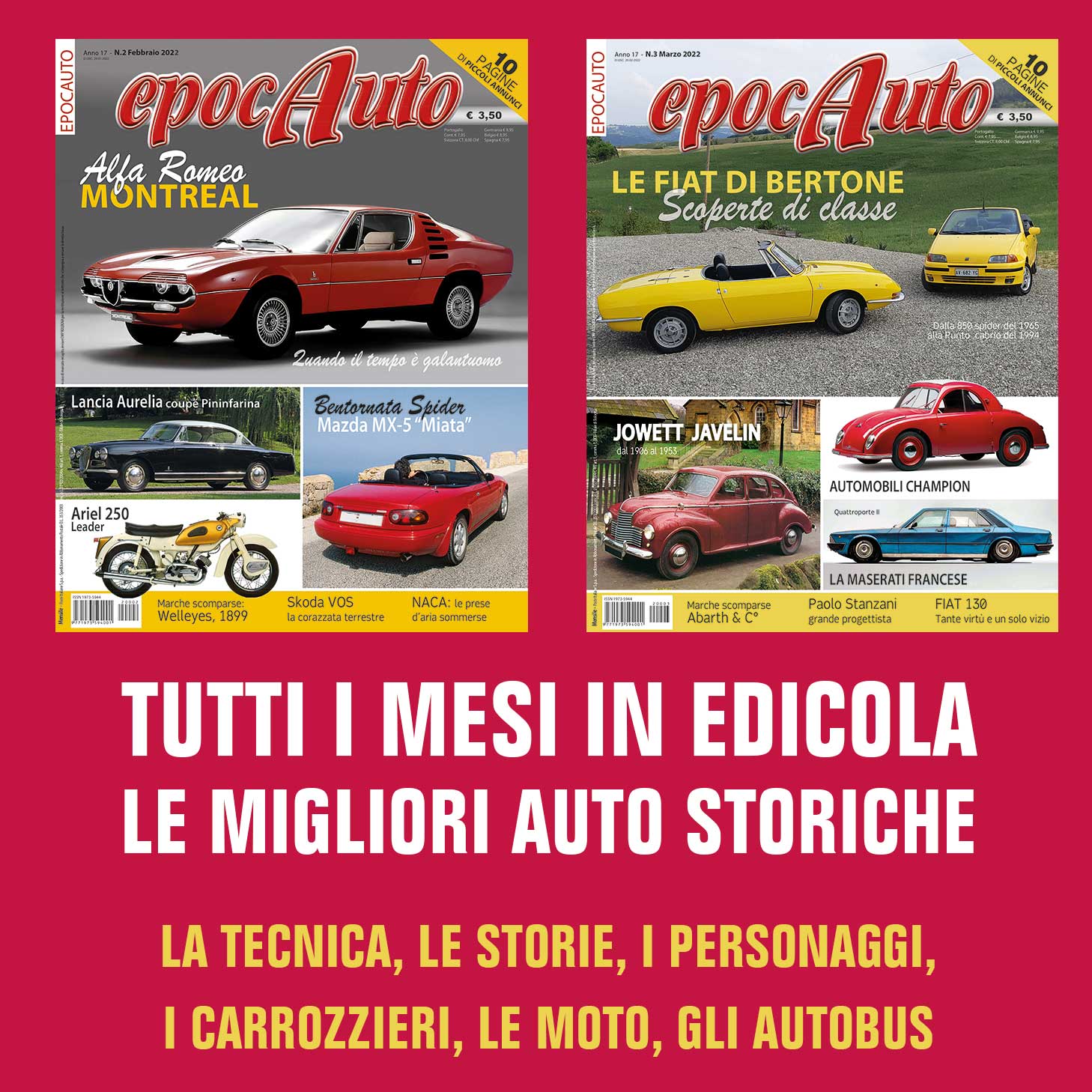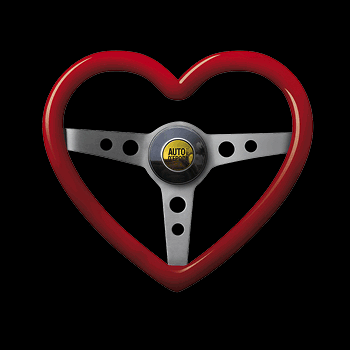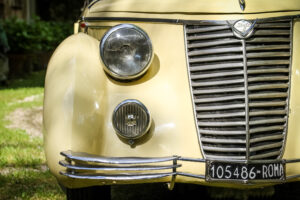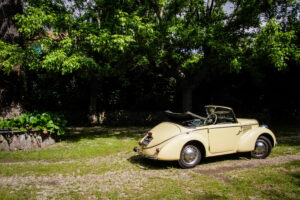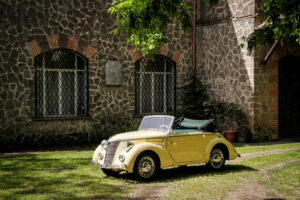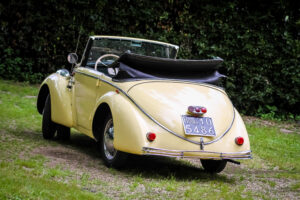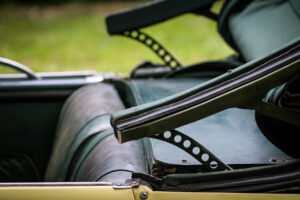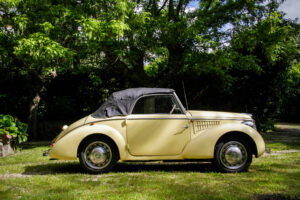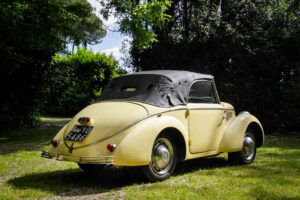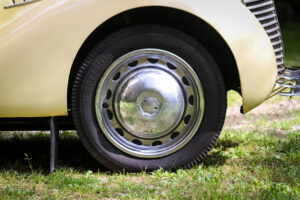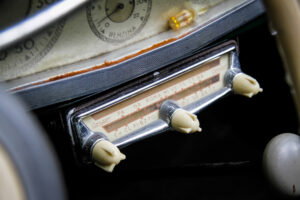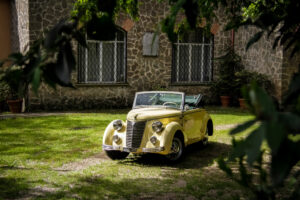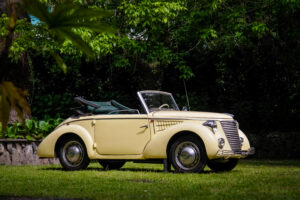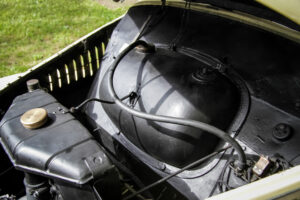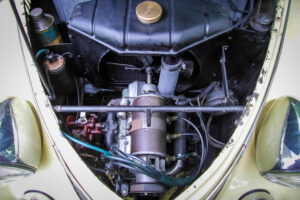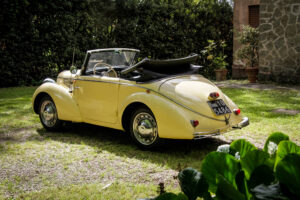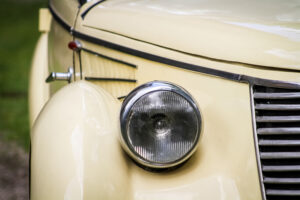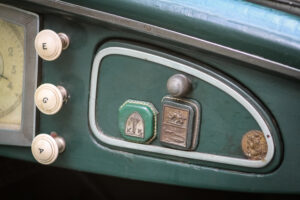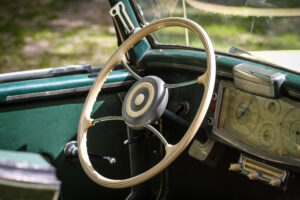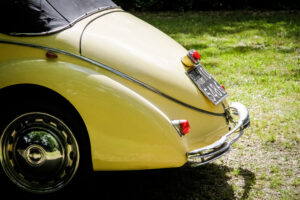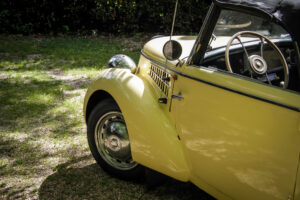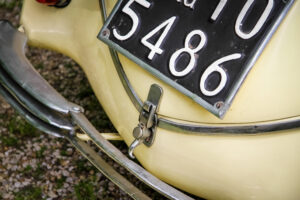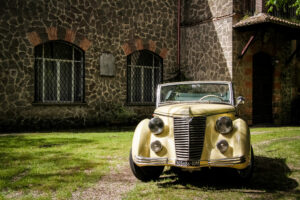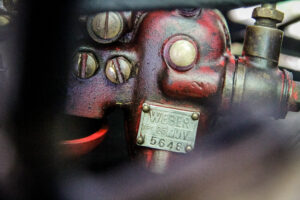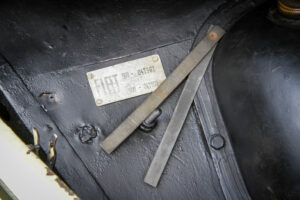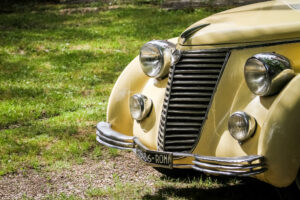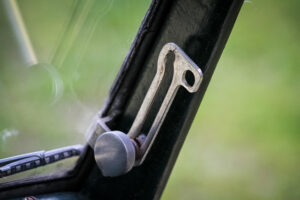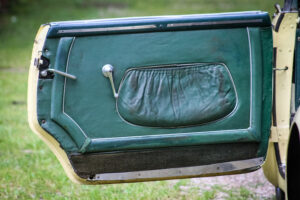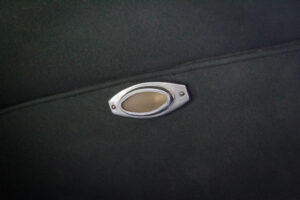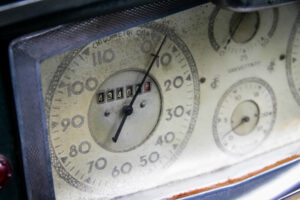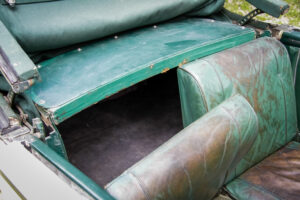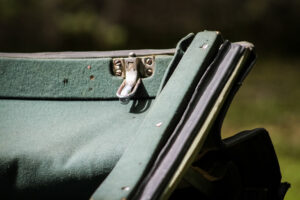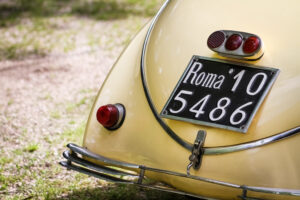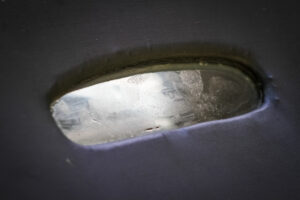Magazine Agorauto
The Siata Amica, a luxury discovery in a favour box format
Author: Michele Di Mauro · Credits Ph: Michele Di Mauro
5 April 2022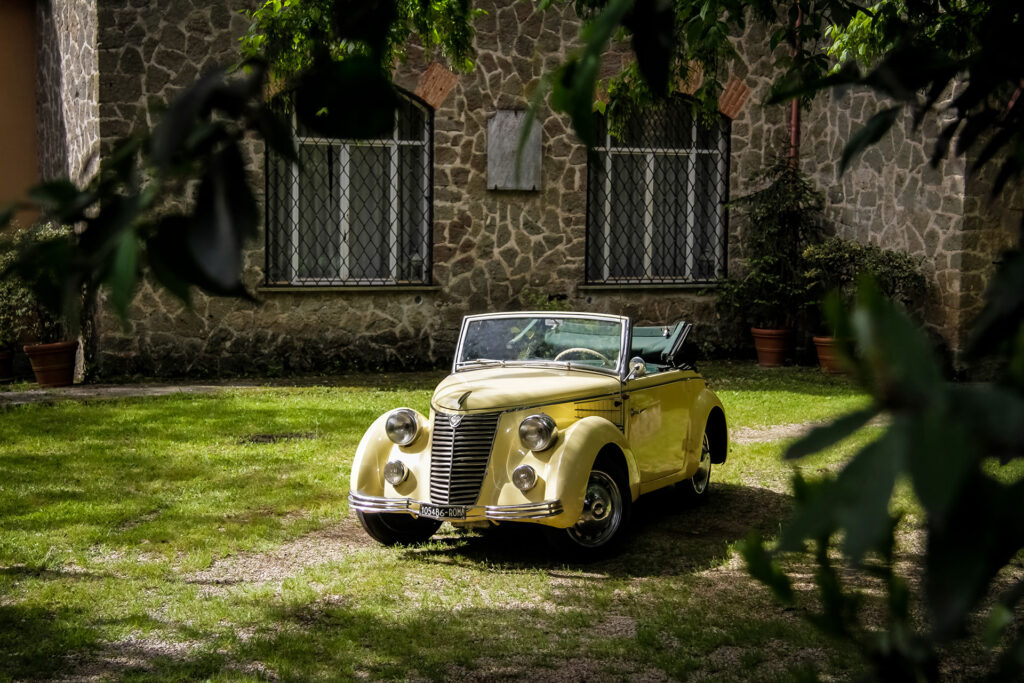
Established in Turin in 1926, Siata, an acronym which stands for Società Italiana Applicazioni Tecniche Auto-Aviatorie, focused during the interwar years on the production of components and spare parts for automobiles, almost exclusively under the Fiat brand. Business got off to a good start, and within a short time the company found itself able to produce cars under its own name, although it continued to rely on chassis and mechanicals from the Turin colossus.
The first series of the Siata Amica appeared in the second half of the 1930s, as a custom-built version of the newly released Fiat 500 A. It was a car which thought out of the box, which made it rare at the time, and extremely rare today.
It is easy to see why: with bodywork by Bertone, the Amica was a kind of distillation of the best that the company had to offer, on a “Topolino” base. The result was a small car which, with a completely new bodywork and refit, took luxury to its very limits. It was also a rather anomalous product, because, in an era in which very few Italians could afford a car, those with the wherewithal to buy an Amica would probably spend their money on something more spacious and functional. The Amica, on the other hand, was aimed at a niche audience, at the wealthy who could afford more than one car, who already had at least one well-appointed car for the entire family, and who could therefore afford the luxury of buying another car, smaller and prissy, but prestigious nonetheless.
When it came to shaping the Amica, Bertone produced a miniature of his larger and more streamlined Fiat 1500 cabriolet, with its “windbreaker” grille, fold-down windscreen, smooth and elongated fenders, and sharp tail. Despite its truly “petite” dimensions, the little Amica managed to maintain an excellent balance of shapes and proportions, giving the illusion, when viewed from certain angles, of a car from a higher segment.
Its fittings, on the other hand, were truly from a higher segment. Materials and finish were the best at the time, and the state of conservation of the example photographed for Agorauto bears witness to this, almost ninety years later. The quality and sophistication of some of the bodywork details are impressive, such as the integrated hub caps, the mechanism for lowering the windscreen, the additional front lights, the side friezes, and the luxurious three-blade moulded bumpers which follow the curves of the bodywork.
But the interior is even more surprising, with finishes which are truly worthy of a car with a quite different pedigree: the dark green leather finish on the upholstery and door panels with pockets, the comprehensive and graphically refined instrumentation, the glove compartment with its door, and the radio perfectly co-ordinated with the instrumentation and knobs.
The highlight is the soft top, which is by now damaged at its most delicate points but still completely original. Made up of three thick layers and an internal green woolen cloth covering reminiscent of the leather and padding of a saddle, it sports a modern-style bellows-like folding movement, a small rear window made of safety glass, and incorporates a small ceiling light.
Yet Siata’s efforts are not limited to the fittings alone – quite the contrary. The best is to be found under the bonnet, where the half-litre Fiat engine is fitted with a Siata overhead valve head (these were originally side-mounted) and a Weber 26 carburettor instead of the standard 22 unit. The result is a maximum power which is increased from 13 horsepower in the standard version to approximately 20 hp. That is only an additional 7 hp, but in absolute terms, it represents a power increase of more than 50%.
From the moment it was purchased, the car in the picture, built in 1939 on a 1938 chassis, was only very rarely used: the war began a few months later, and, for fear of it being requisitioned, the owners walled it up in a building close to the capital.
At the start of the 1950s, the little Siata was rediscovered and put back on the road, in the original condition in which it still stands today; the only concession to the passage of time is a surface refresh to the paintwork and the chrome on the bumpers. Its only occasional use enabled its preservation, but that was not enough for it to escape the notice of Cavalier Bruno Tondi, a restaurateur and entrepreneur from Velletri.
The great enthusiast that he is, he sensed its value and, after a courtship which lasted years, managed to acquire it and maintain it in its exceptional state of conservation, which makes it a useful and significant reference for the restoration of similar models. The mileage shown on the speedometer, which is just under 43,500 km, seems perfectly believable.
But what happened to Siata after the Second World War? In 1949, they restarted operations with the Amica, which was still offered as a small two-seater cabriolet on Fiat 500 “Topolino” mechanicals, but now with new, more modern bodywork, and integrated mudguards. The following year, it was the turn of its older sister, the Daina, offered in both cabriolet and coupé versions on mechanicals derived from the Fiat 1400.
1952 saw the arrival of the prestigious 208 Sport, with bodywork designed by Giovanni Michelotti and Fiat 8V mechanicals, a model on which Siata itself had collaborated. But the bulk of production continued to focus on small displacements: this was followed with the stunning 300 BC, which also achieved success overseas, and, in 1959, the Siata-Abarth 750, available in both coupé and spider versions. In the 60s, however, the company lost its way; this period saw the arrival of the coupé TS, derived from the Fiat 1300-1500, and the Spring, a spider with retro lines and Fiat 850 mechanicals, the swansong of this small but refined Turin company.
Tags: amica, bertone, fiat 500, Siata, topolino





